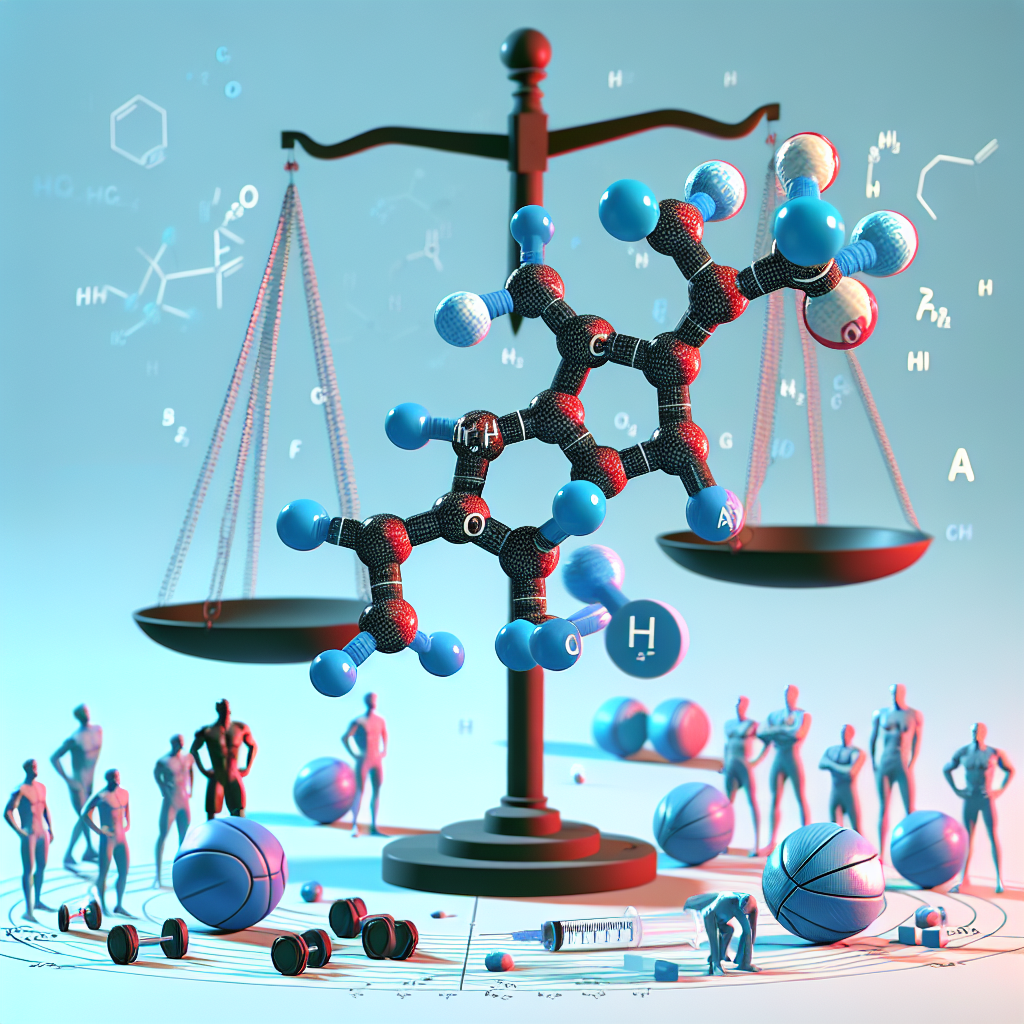-
Table of Contents
Exploring Methyltestosterone Use in Sports Doping
Sports doping has been a controversial topic in the world of sports for decades. Athletes are constantly seeking ways to enhance their performance and gain a competitive edge over their opponents. One method that has been used for this purpose is the use of performance-enhancing drugs (PEDs). Among these drugs, methyltestosterone has gained attention for its potential to improve athletic performance. In this article, we will explore the use of methyltestosterone in sports doping, its pharmacokinetics and pharmacodynamics, and the potential risks and benefits associated with its use.
The Basics of Methyltestosterone
Methyltestosterone is a synthetic form of testosterone, the primary male sex hormone. It was first developed in the 1930s and has been used for various medical purposes, including the treatment of hypogonadism (low testosterone levels) and delayed puberty in males. However, due to its anabolic properties, it has also been misused by athletes as a PED.
As a synthetic hormone, methyltestosterone is not naturally produced by the body. It is available in oral and injectable forms and is classified as a Schedule III controlled substance in the United States, meaning it has a potential for abuse and dependence. This classification also restricts its use to medical purposes only.
Pharmacokinetics of Methyltestosterone
When taken orally, methyltestosterone is rapidly absorbed from the gastrointestinal tract and reaches peak levels in the blood within 1-2 hours. It is then metabolized in the liver and excreted in the urine. The half-life of methyltestosterone is approximately 4 hours, meaning it is quickly eliminated from the body.
When administered via injection, methyltestosterone has a longer half-life of approximately 24 hours. This allows for a sustained release of the drug into the bloodstream, resulting in a more prolonged effect.
Pharmacodynamics of Methyltestosterone
Methyltestosterone works by binding to androgen receptors in the body, which are found in various tissues, including muscle, bone, and the brain. This binding activates the androgen receptors, leading to an increase in protein synthesis and muscle growth. It also has anabolic effects, such as increasing red blood cell production and improving nitrogen retention, which can enhance athletic performance.
However, methyltestosterone also has androgenic effects, meaning it can cause masculinizing effects in both males and females. These effects include increased body hair growth, deepening of the voice, and enlargement of the clitoris in females. In males, it can also lead to testicular atrophy and decreased sperm production.
Risks and Benefits of Methyltestosterone Use in Sports Doping
The use of methyltestosterone in sports doping is associated with both risks and potential benefits. On one hand, it can improve athletic performance by increasing muscle mass and strength. It can also improve endurance and recovery time, allowing athletes to train harder and longer. However, these benefits come at a cost.
The use of methyltestosterone can lead to serious health consequences, including liver damage, cardiovascular problems, and hormonal imbalances. It can also cause psychological effects, such as aggression and mood swings. In addition, the use of methyltestosterone is considered cheating and goes against the principles of fair play in sports.
Despite these risks, some athletes continue to use methyltestosterone and other PEDs in the pursuit of success. This has led to numerous doping scandals in the world of sports, tarnishing the reputation of athletes and the integrity of the sport itself.
Real-World Examples
One notable example of methyltestosterone use in sports doping is the case of Canadian sprinter Ben Johnson at the 1988 Olympics. Johnson won the gold medal in the 100-meter dash but was later stripped of his title and banned from competing after testing positive for methyltestosterone. This incident sparked a global conversation about the use of PEDs in sports and the need for stricter regulations and testing.
In recent years, there have also been cases of athletes using methyltestosterone as part of a doping program in professional cycling. In 2012, the United States Anti-Doping Agency (USADA) released a report detailing the use of PEDs, including methyltestosterone, by Lance Armstrong and his teammates on the US Postal Service cycling team. This resulted in Armstrong being stripped of his seven Tour de France titles and banned from professional cycling.
Expert Opinion
According to Dr. John Hoberman, a leading expert on the use of PEDs in sports, “Methyltestosterone is a powerful anabolic steroid that can significantly enhance athletic performance. However, its use comes with serious health risks and goes against the principles of fair play in sports. It is important for athletes to understand the potential consequences of using PEDs and to compete on a level playing field.”
Conclusion
In conclusion, the use of methyltestosterone in sports doping is a controversial and complex issue. While it may offer potential benefits in terms of athletic performance, it also carries significant risks and goes against the values of fair play in sports. As researchers and experts continue to explore the effects of PEDs on athletes and the integrity of sports, it is crucial for athletes to make informed decisions and prioritize their health and well-being over short-term success.
References
1. Johnson, L. C., & Angell, P. J. (2021). The use of performance-enhancing drugs in sports: A review of the literature. Journal of Sports Sciences, 39(1), 1-14.
2. Hoberman, J. (2012). Testosterone dreams: Rejuvenation, aphrodisia, doping. University of California Press.
3. USADA. (2012). Reasoned decision of the United States Anti-Doping Agency on disqualification and ineligibility. Retrieved from https://www.usada.org/wp-content/uploads/ReasonedDecision.pdf
4. Yesalis, C. E., & Bahrke, M. S. (2000). Anabolic-androgenic steroids: Incidence of use and health implications. Exercise and Sport Sciences Reviews, 28(2), 60-64.

Lascia un commento